Marcel Proust (1871-1922): Art in Within A Budding Grove, Part 1: Madame Swann at Home
Art in Proust - Within A Budding Grove, Part 1: Madame Swann at Home

Titian (ca. 1488/1490-1576), Assumption of the Virgin or The Frari Assumption (1515-1518).
Image source: Wikimedia Commons. Public domain in the USA (pre-1923).
"I should enjoy the same rapture as on the day when in a gondola I glided to the foot of the Titian of the Frari or the Carpaccios of San Giorgio dei Schiavoni, were I ever to hear Berma repeat the lines beginning, 'On dit qu’un prompt départ vous éloigne de nous, / Seigneur — —'"
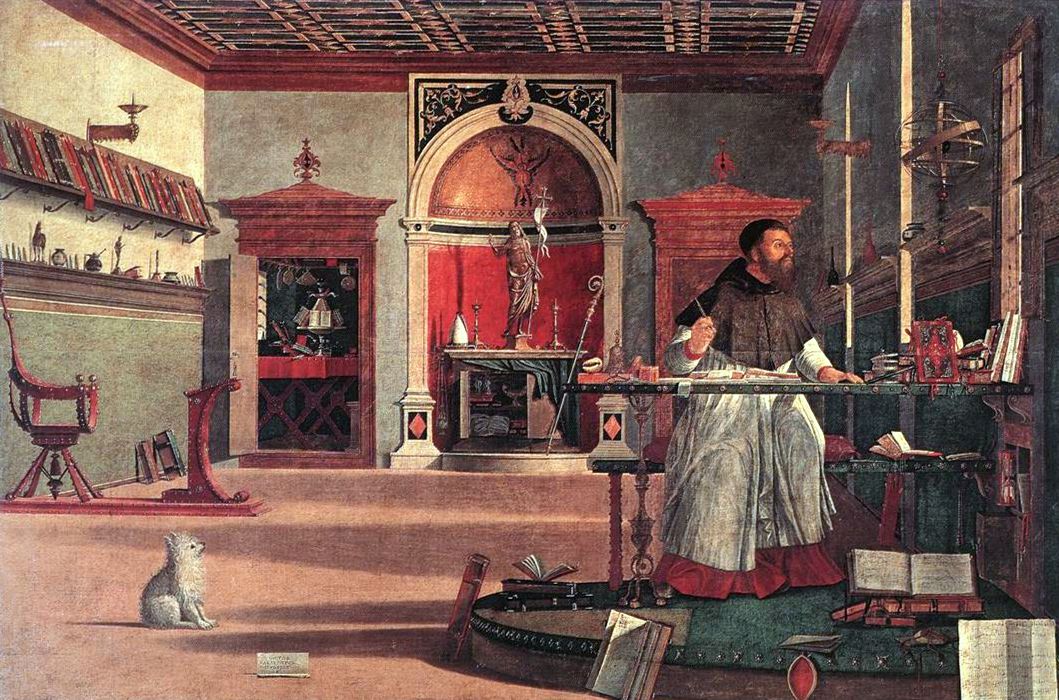
Vittore Carpaccio (1465-1526), St. Augustine in His Study (1502).
Image source: Wikimedia Commons. Public domain in the USA (pre-1923).
"I should enjoy the same rapture as on the day when in a gondola I glided to the foot of the Titian of the Frari or the Carpaccios of San Giorgio dei Schiavoni, were I ever to hear Berma repeat the lines beginning, 'On dit qu’un prompt départ vous éloigne de nous, / Seigneur — —'"

Vittore Carpaccio (1465-1526), St. George and the Dragon (1502).
Image source: Wikimedia Commons. Public domain in the USA (pre-1923).
"I should enjoy the same rapture as on the day when in a gondola I glided to the foot of the Titian of the Frari or the Carpaccios of San Giorgio dei Schiavoni, were I ever to hear Berma repeat the lines beginning, 'On dit qu’un prompt départ vous éloigne de nous, / Seigneur — —'"

Michelangelo (1475-1564), Tomb of Pope Julius II (1545).
Image source: Wikimedia Commons. Author: Jörg Bittner Unna. License: CC-BY-3.0.
" ... she had gone herself to the Halles to procure the best cuts of rump-steak, shin of beef, calves’-feet, as Michelangelo passed eight months in the mountains of Carrara choosing the most perfect blocks of marble for the monument of Julius II ... "

Benvenuto Cellini (1500-1571), Perseus with the Head of Medusa (1545-1554).
Image source: Wikimedia Commons. Author: Paolo Villa. License: CC-BY-AS 4.0 International.
"And happy to find these reasons for Berma’s superiority, though not without a suspicion that they no more accounted for it than would for that of the Gioconda or of Benvenuto’s Perseus a peasant’s gaping “That’s a good bit of work. It’s all gold, look! Fine, ain’t it?”, I greedily imbibed the strong wine of this popular enthusiasm."
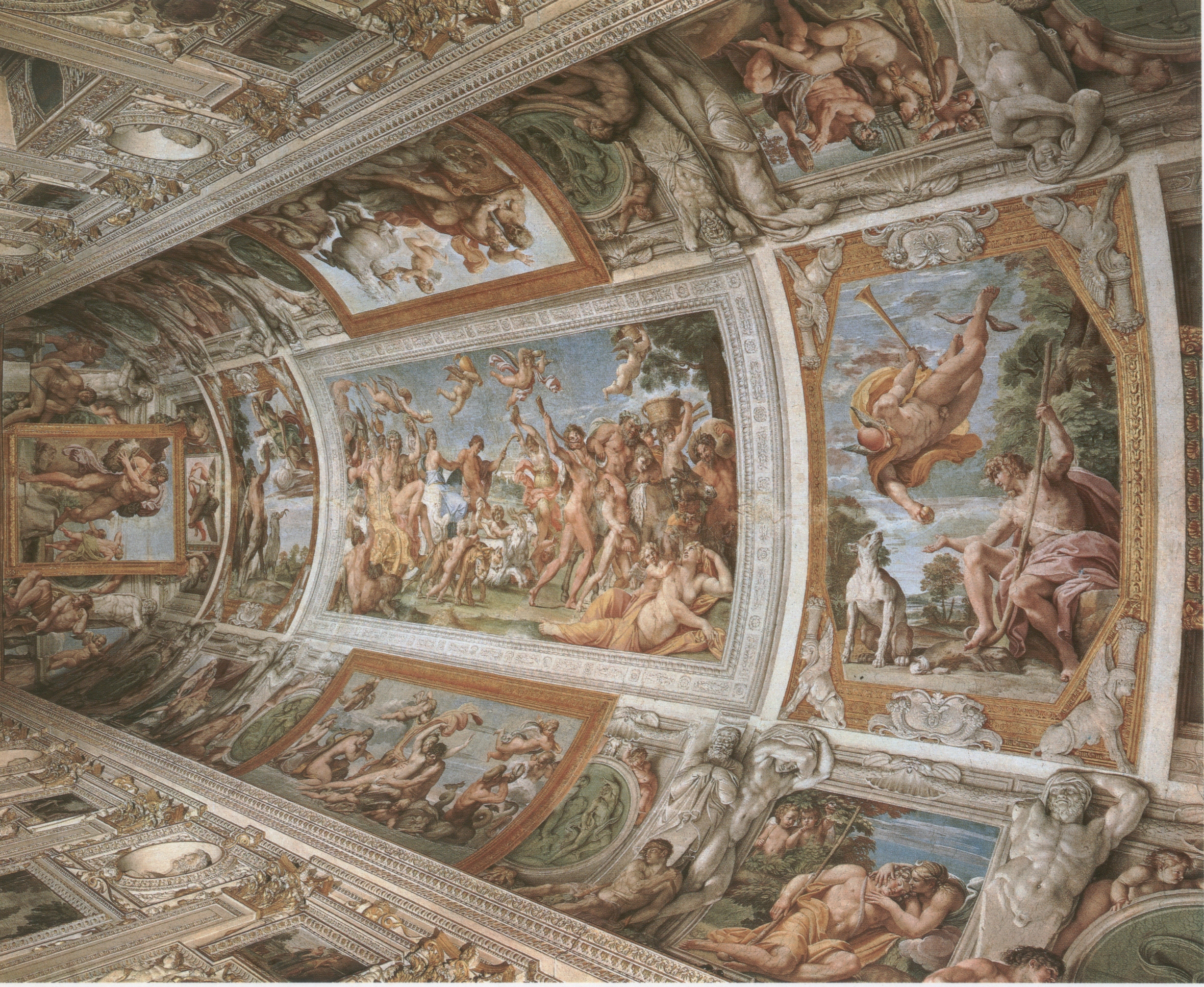
Annibale Carracci (1560-1609), The Loves of the Gods (1597/1608), in the Palazzo Farnese, Rome.
Image source: Wikimedia Commons. Public domain in the USA (pre-1923).
"' ... for my part I can see him very well placed, with his artistic leanings, in the setting of the Farnese Palace and the Caracci Gallery. ... '"

Leonardo da Vinci (1452-1519), Flowers (date unknown).
Image source: Wikimedia Commons. Public domain in the USA (pre-1923).
"But since I never hoped to obtain an actual fragment of those plaits, if at least I had been able to have their photograph, how far more precious than one of a sheet of flowers traced by Vinci’s pencil!"

Claude Monet (1840-1926), Impression, Sunrise (1872).
Image source: Wikimedia Commons. Public domain in the USA (pre-1923).
"No doubt one can easily imagine [...] that all the revolutions which have hitherto occurred in painting or in music did at least shew respect for certain rules, whereas that which immediately confronts us, be it impressionism, a striving after discord, an exclusive use of the Chinese scale, cubism, futurism or what you will, differs outrageously from all that have occurred before."

Juan Gris (1887-1927), Still Life with Checkered Tablecloth (1915).
Image source: Wikimedia Commons. Public domain in the USA (pre-1923).
"No doubt one can easily imagine [...] that all the revolutions which have hitherto occurred in painting or in music did at least shew respect for certain rules, whereas that which immediately confronts us, be it impressionism, a striving after discord, an exclusive use of the Chinese scale, cubism, futurism or what you will, differs outrageously from all that have occurred before."
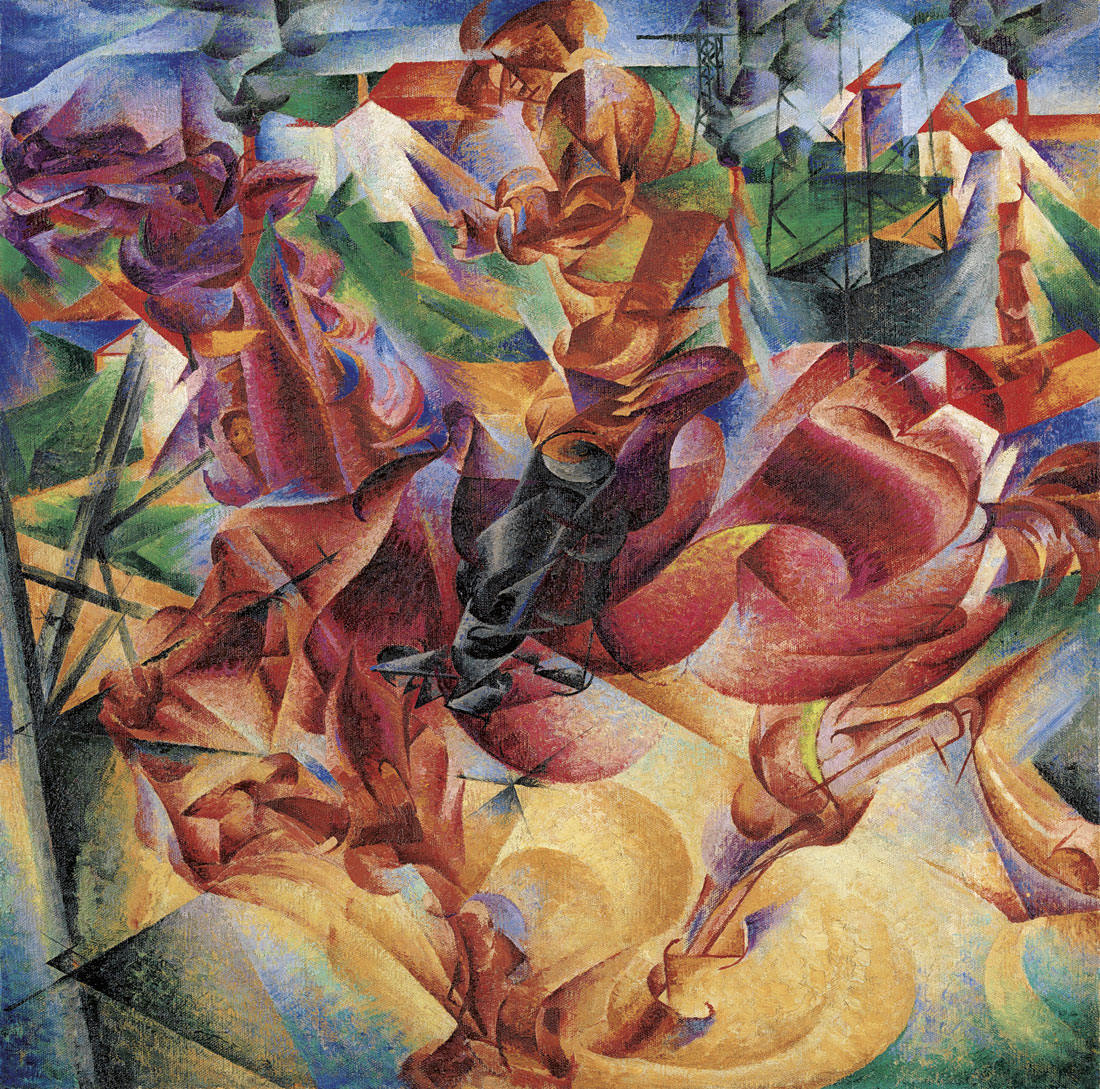
Umberto Boccioni (1882-1916), Elasticity (1912).
Image source: Wikimedia Commons. Public domain in the USA (pre-1923).
"No doubt one can easily imagine [...] that all the revolutions which have hitherto occurred in painting or in music did at least shew respect for certain rules, whereas that which immediately confronts us, be it impressionism, a striving after discord, an exclusive use of the Chinese scale, cubism, futurism or what you will, differs outrageously from all that have occurred before."

Fra Bartolomeo (1472-1517), Portrait of Girolamo Savonarola (1498).
Image source: Wikimedia Commons. Public domain in the USA (pre-1923).
"'A frightful woman! The one thing to be said for her is that she is exactly like Savonarola. She is the very image of that portrait of Savonarola, by Fra Bartolomeo.'"

Benozzo Gozzoli (1420-1497), Procession of the Magi, on the west wall of the Magi Chapel (ca. 1459).
Image source: Wikimedia Commons. Public domain in the USA (pre-1923).
"'But if one had listened to Swann, the processions of the Kings of the East, already so anachronistic when Benozzo Gozzoli introduced in their midst various Medici, would have been even more so ... "
Franz Xavier Winterhalter (1805-1873), Carmen Aguado, duchesse de Montmorency (1860).
Image source: The Athenaeum. Public domain in the USA (pre-1923).
Mme. Swann swept to the ground in a curtsey and made as if to kiss the hand of the lady, who, standing there like a Winterhalter portrait, drew her up again and kissed her cheek.

Bernardino Luini (1475-1532), Adoration of the Magi (ca. first quarter of the 16th century).
Image source: Wikimedia Commons. Public domain in the USA (pre-1923).
" ... that generous and courteous Swann who had offered it to me, or to them rather, without seeming any more to be conscious of its value than is, in Luini’s fresco, the charming Mage with the arched nose and fair hair, to whom, it appeared, Swann had at one time been thought to bear a striking resemblance."
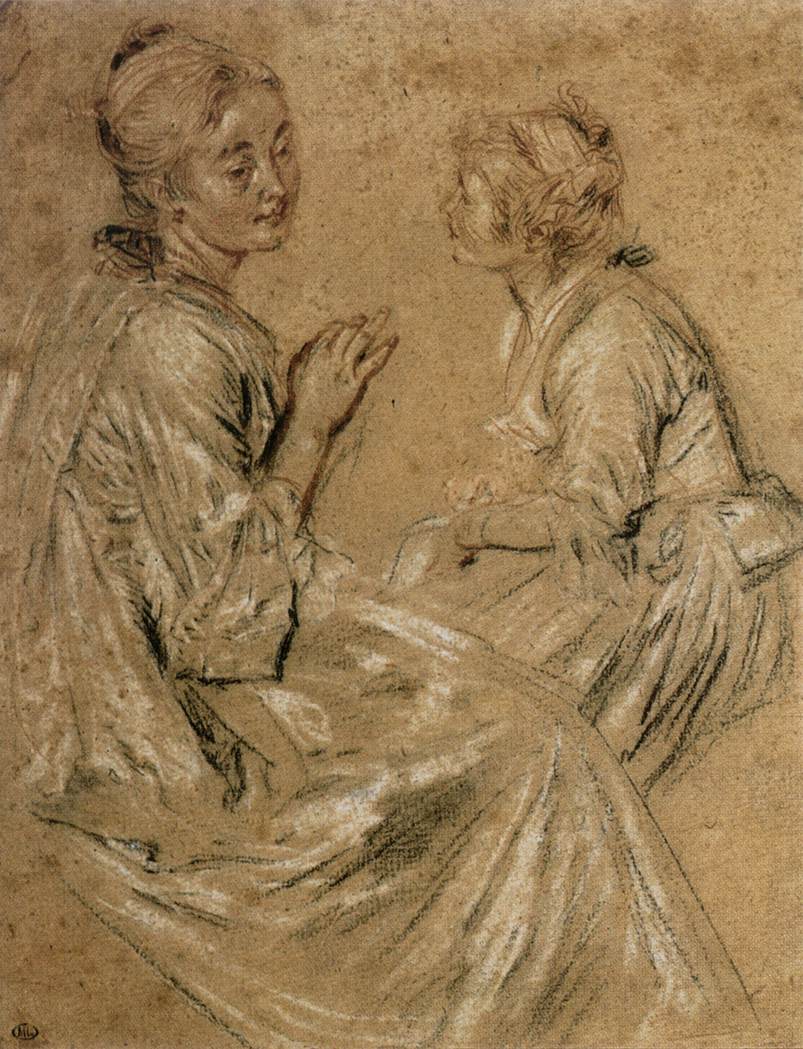
Antoine Watteau (1684-1721), Two Seated Women (1716/17).
Image source: Wikiart.org. Public domain in the USA (pre-1923).
"Rarely nowadays was it in one of those Japanese wrappers that Odette received her familiars, but rather in the bright and billowing silk of a Watteau gown whose flowering foam she made as though to caress where it covered her bosom ... "
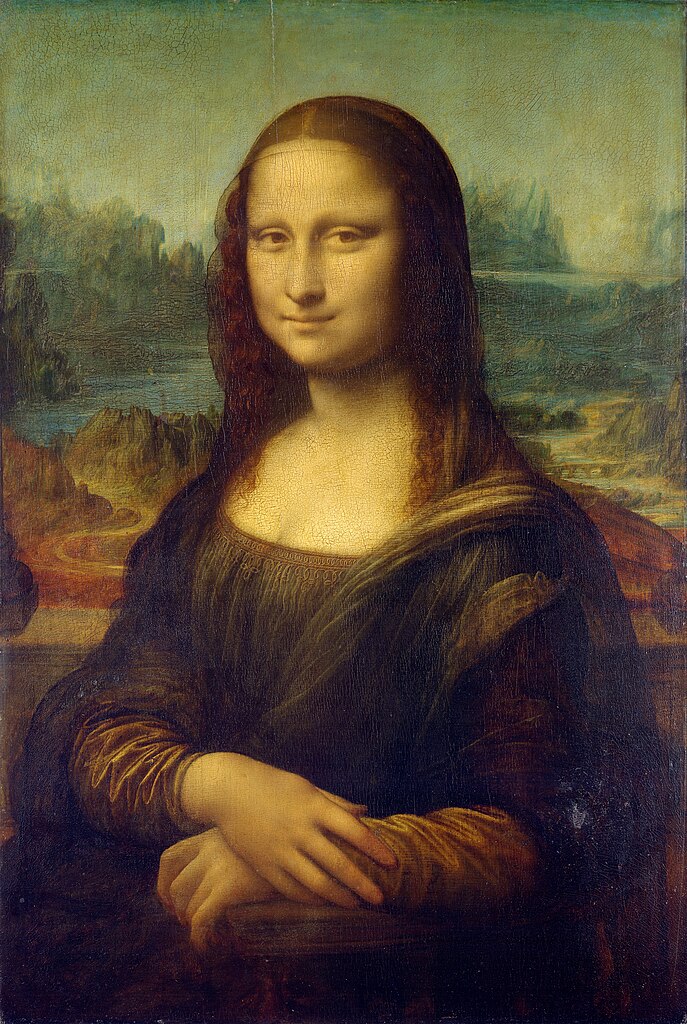
Leonardo da Vinci (1452-1519), Mona Lisa ('La Gioconda') (ca. 1503-1516).
Image source: Wikimedia Commons. Public domain in the USA (pre-1923).
"She used often to say that she would go without bread rather than give up ‘art’ and ‘having nice things about her,’ and that the burning of the ‘Gioconda’ would distress her infinitely more than the destruction, by the same element, of ‘millions’ of the people she knew."

Sandro Botticelli (1445-1510), Madonna of the Magnificat (1483).
Image source: Wikimedia Commons. Public domain in the USA (pre-1923).
"Swann had a wonderful scarf of oriental silk, blue and pink, which he had bought because it was exactly that worn by Our Lady in the Magnificat."